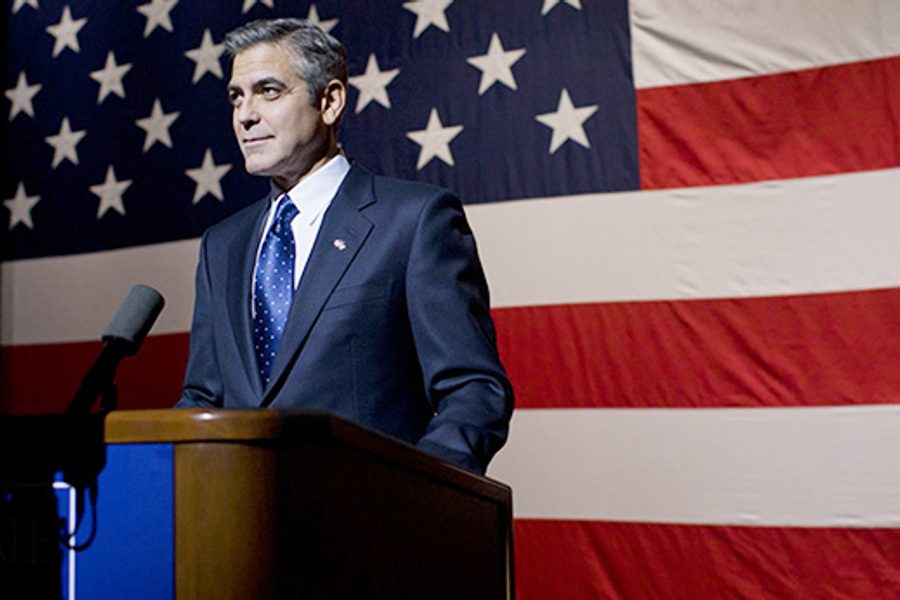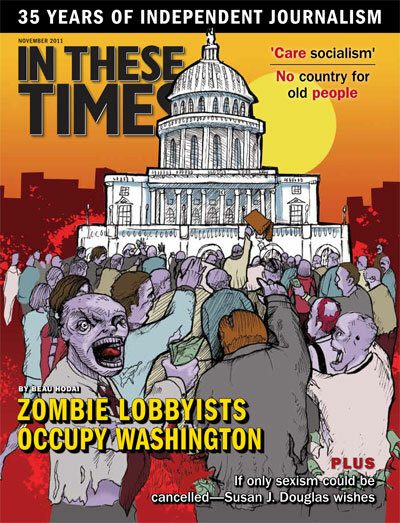In Defense of Nostalgia
It’s gotten a bum rap, but it’s worth revisiting our collective history—and resisting the market’s obsession with novelty.
Michael Atkinson

We’re suddenly living in Mad Men World. Even if you don’t watch the show, you still know who Don Draper is and have seen the weeds of re-imagined retro-fashion crop up all around you. Brooks Brothers has a “Mad Men Edition” suit, while Banana Republic has launched an entire official high-end Mad Men brand of couture. Whiskey sales have enjoyed a measurable uptick. In the show’s wake appear the BBC hit The Hour and a new would-be network cash-in this fall, ABC’s Pan-Am, set in the super-cool ’60s of cocktail lounges, middle-class vice and nascent sexual liberation. (NBC’s The Playboy Club, conjured up from the same world, was cancelled in October; see page 13.)
Big whoop – since the ’70s, which for some reason harbored a hyper-nostalgic fixation on the Depression, we have become accustomed to the seemingly whimsical whiplash experienced when our pop culture decides to idealize a bygone era. And we have grown used to the gap between that era and the time we decide to recreate it growing smaller and smaller, until we were witness to teenagers having ’90s dress-up parties when the decade was barely over. But the Mad Men-ish longing for the early-to-mid-’60s breaks that pattern, reaching back almost a half-century toward an ascendant-middle-class lifestyle that, not insignificantly, indulges in the same smoke, booze, red meat, infidelity, social one-upmanship and gender stereotypes we either shun today or partake of guilty as hell. You don’t have to be Claude Levi-Strauss to see why this era is appealing in our politically correct present day.
Of course, however much Mad Men bends over backward to apply a 21st-century perspective to the sexual politics of the Kennedy years, it’s become ubiquitous because of its reactionary hipness. The lifestyle choices are enjoying a new glamour moment, as if first-wave feminism had no particular reason to ever happen. Housewife, secretary, stewardess and cocktail waitress – it’s exactly the catalogue of objectified paradigms that spawned decades of protest.
But it seems wise not to take trends in nostalgic obsession too seriously. (Americans all cocked their ears toward Archie Bunker in the ’70s, but the civil rights evolution continued.) Instead, I’d like to consider the Mad Men zeitgeist as merely a juicy, intimate, perhaps short-lived love affair with the past. I claim comradeship with nearly any cultural manifestation that resists the kneejerk market imperative – only what’s brand new is what’s important – and instead hearkens backward, into our collective history.
The right now is so brief and spare and crude, after all, while the past – the 115-plus years of cinema, certainly – is fantastically rich, semi-forgotten and far better designed. Nostalgia has gotten a bum rap in the last half-century, mostly as a victim of academic English departments and the rise of postmodern theory. The feminists’ and postcolonialists’ reasonable stance against nostalgia saw it as an enabling ideology (stretching that term a bit) for ages of misogyny and colonialist oppression. Okay, but the past is also beautiful. In his essay collection Maps & Legends, Michael Chabon makes a perfect political case for it:
We are not … necessarily convinced that things were once better than they are now. … We are simply like those savants in the Borges story who stumble upon certain objects and totems that turn out to be the random emanations and proofs of existence of Tlon. The past is another planet; anyone ought to wonder, as we do, at any traces of it that turn up on this one.
The past isn’t “better,” but different, alien. And it seeps through our world like a watermark. It is a seductive arena because its tribulations and conflicts are already resolved, for better or worse; retrospection allows us to see the humanity and fiery pleasures of, say, the British homefront during World War II, in ways that the immediate distractions and crises of the time kept everyone from noticing. As it is, so much is lost, and there’s little we can do to stave the flow, despite the obsessive efforts by untold armies of memoir writers, museum workers and, well, television producers. The early ’60s weren’t heaven, but remembering that they happened is far more interesting than whatever we’re told will fascinate us tomorrow.

I hope you found this article important. Before you leave, I want to ask you to consider supporting our work with a donation. In These Times needs readers like you to help sustain our mission. We don’t depend on—or want—corporate advertising or deep-pocketed billionaires to fund our journalism. We’re supported by you, the reader, so we can focus on covering the issues that matter most to the progressive movement without fear or compromise.
Our work isn’t hidden behind a paywall because of people like you who support our journalism. We want to keep it that way. If you value the work we do and the movements we cover, please consider donating to In These Times.








